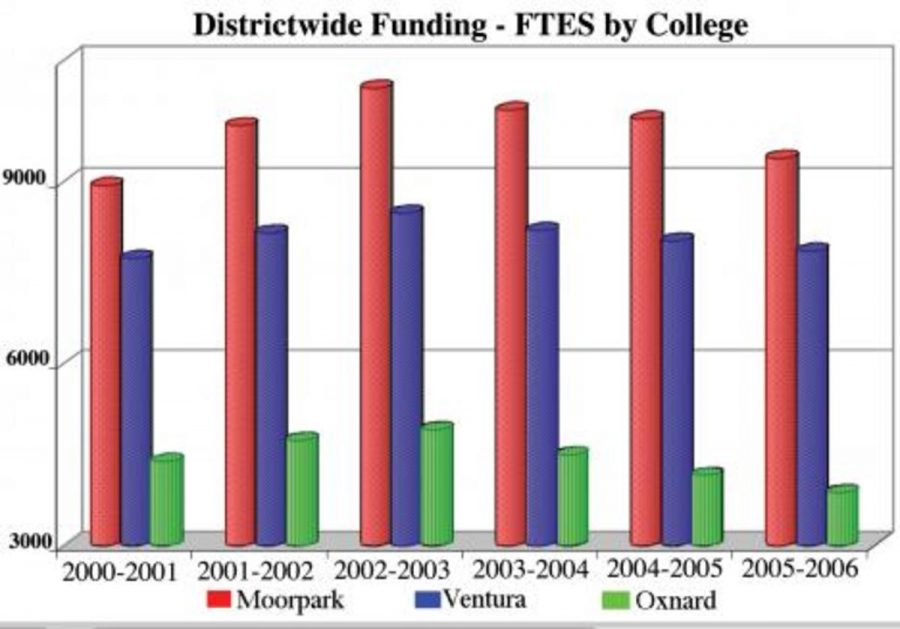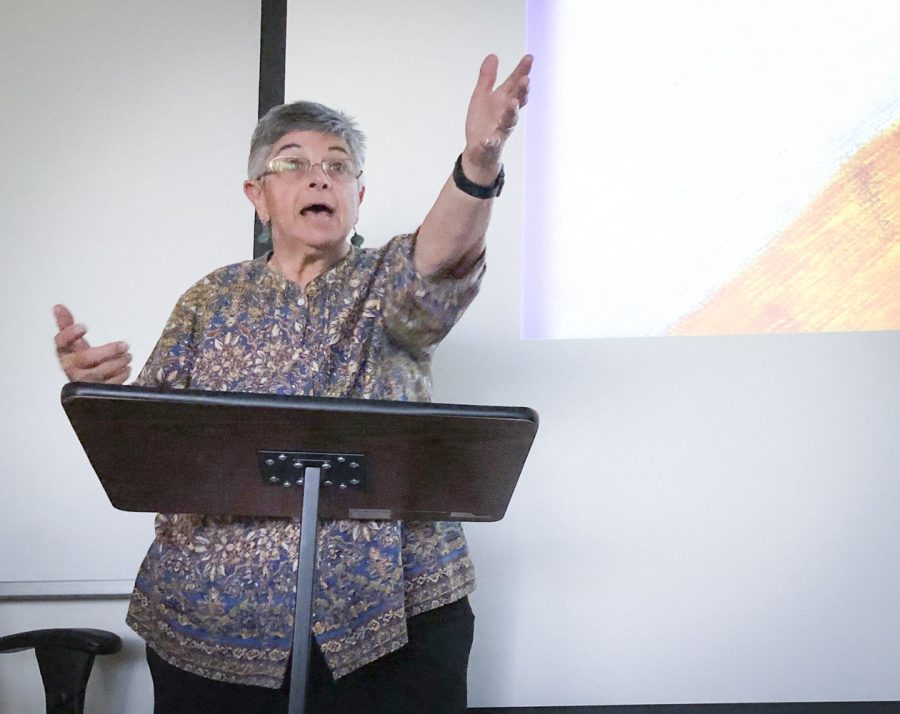All three campuses may soon face cuts in student services, non-instructional programs, upper-level language courses, and classes offered by more than one campus to close a prospective budget gap of $3.5-5 million. With college enrollment still in a nosedive, the Ventura County Community College District Board of Trustees voted unanimously to approve a $124 million budget for the 2005-2006 fiscal year. Yet the new budget relies on no drop in the magic number-enrollment revenue to avoid cuts-and enrollment has, in fact, dropped.
Although the spending plan includes $4.2 million in new state money, the board now faces a deficit in 2006 as enrollment continues to fall.
The state calculates how much money the district receives for enrollment by dividing the “head count,” or total number of students enrolled, by a full-time load- 12 units- to calculate the FTES, or full-time equivalent student number. Since fall 2004, the FTES is down about 900 units. The state would have paid the district $3,900 for each of those FTES units. Therefore right now the district will not receive $3.5 million that it would have received. If enrollment declines the same amount in spring as it has this fall, the deficit may be as high as $4.3 million.
Enrollment numbers had not yet come in when the board approved the new budget at a September 13 meeting held at Moorpark College. Yet ,already, the trustees had concerns. VCCCD Chief Financial Officer Sue Johnson attempted to address the board’s worries. The district, she pointed out, will continue the popular 4-week summer session in 2006 in which high-demand courses are offered in a compact format. Also, the district has plans to reach out to local high school campuses and encourage their students to enroll in VCCCD colleges. Johnson said the financial office did not anticipate major program cuts reminiscent of the 2004-2005 fiscal year.
“We in fact increased the class schedule, and enhanced the class schedule (in relation to 2003-2004). I think we’re confident that we’re not losing enrollment because we’ve cut classes,” Johnson said.
Yet it is now clear the board will have to cut expenditures somewhere, unless they can find a way to significantly raise enrollment. Ray Di Guilio, Vice President of Business Services at Moorpark College, explained that the board is hesitant to cut instructional programs. Leaving open positions vacated by retiring faculty, moving certain programs to only one campus, and expanding distance learning through telecommunications could all cut costs. Will these cuts be enough to close the gap? Di Guilio is optimistic.
“First, we need to look for inefficiency within the administration,” said Di Guilio. Yet he added, “There will be a winner and there will be a loser. That’s just human nature.”
Last March, trustees were forced to cut programs and services to patch up a $5.6 million hole formed when state funding failed to cover projected expenditures. Cafeterias at all three colleges closed briefly, then reopened with reduced offerings and limited hours. Employees had to pay more for medical care and forfeit salary increases for the current year, saving the board $1.5 million. Low-enrollment courses were slashed, including horticulture at Ventura College, ESL classes at Moorpark College, and journalism programs at both Oxnard and Ventura Colleges. The separate journalism programs were replaced with a district-wide program taught through telecommunications.
Future challenges for the board may come once the state reports the final property tax shortfall for the 2005 fiscal year. If the final shortfall is more than anticipated, the district may need to readjust the budget even further, according to the September 13 Board Meeting Executive Summary.






